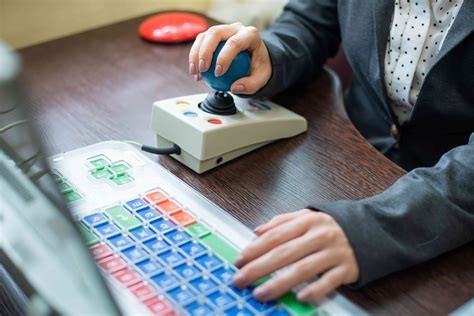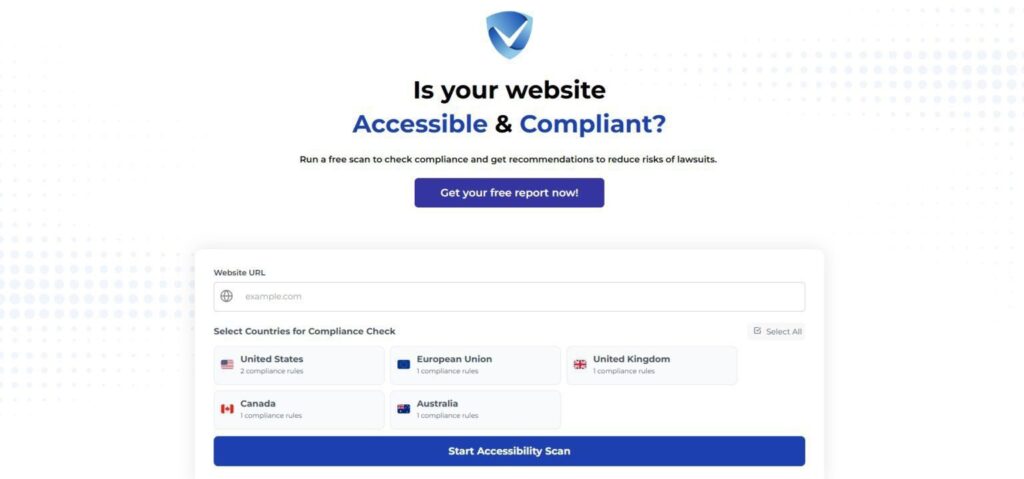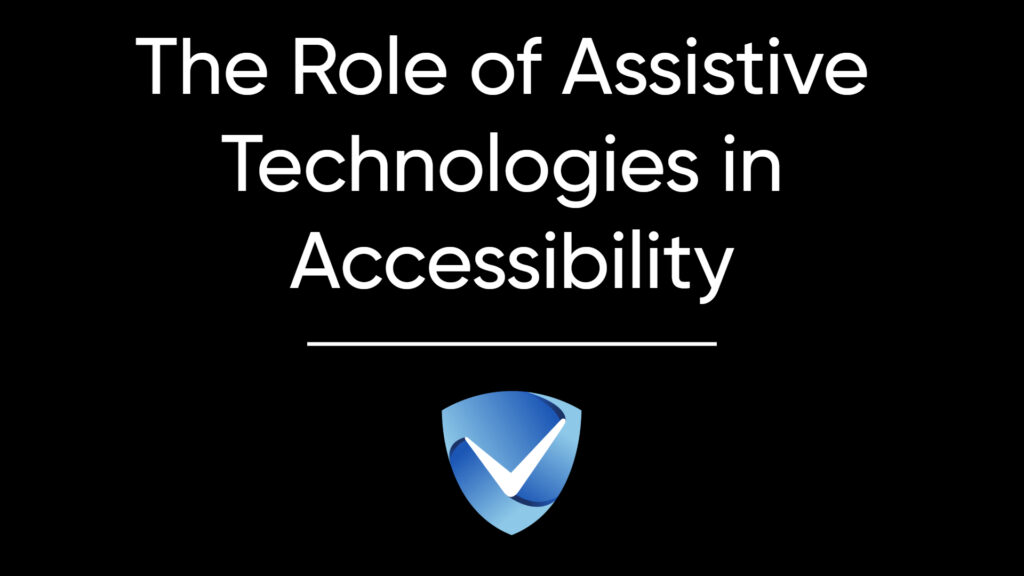Introduction to Assistive Technologies
Assistive technologies (AT) refer to a range of devices, software, and services designed to enhance the functional capabilities of individuals with disabilities. These tools play a pivotal role in promoting accessibility, enabling users to engage with digital content, navigate environments, and perform tasks that might otherwise be challenging or impossible. The overarching goal of assistive technologies is to facilitate independence, enhance participation, and ensure that individuals with disabilities have equal access to information and opportunities.
Assistive technologies encompass various solutions, such as screen readers, accessibility checkers, and mobile accessibility tools that support users in navigating websites and applications. These tools help evaluate compliance with EU accessibility requirements, such as WCAG 2.2 guidelines, which outline best practices for creating accessible content. By utilizing accessibility testing tools, organizations can ensure their websites meet ADA compliance requirements, promoting an inclusive environment for all users, regardless of ability.
In diverse environments, from educational institutions to workplaces and public services, assistive technologies are implemented to address specific accessibility needs. For example, educational sectors utilize accessibility plugins that facilitate learning by providing transcripts for audio content or offering text-to-speech functions for accessible reading. Similarly, in the workplace, accessibility auditing and consulting services ensure that digital platforms are screen reader compatible, addressing the needs of visually impaired employees.
The presence of assistive technologies extends beyond just compliance; they are essential for creating a culture of inclusivity. Organizations can leverage accessibility remediation services to fix accessibility issues identified during an accessibility audit, thus promoting accessible design principles. As society progresses, the continued development and implementation of assistive technologies are vital for fostering an inclusive digital landscape that empowers all individuals to fully participate in their communities.

What are Assistive Technologies?
Assistive technologies encompass a range of devices, software applications, and equipment designed to enhance the functional capabilities of individuals with disabilities. These technologies can significantly improve quality of life by facilitating better communication, mobility, sensory processing, and cognitive function. Under the umbrella of accessibility solutions, assistive technologies offer tailored support to meet diverse needs across various contexts, including education, healthcare, and employment environments.
Typically, assistive technologies can be categorized into several distinct types. For instance, mobility aids, such as wheelchairs and walking frames, are designed for those experiencing challenges with physical movement. These devices enhance not only mobility but also encourage independence, allowing users to navigate their environments more easily. Additionally, there are communication aids like speech-generating devices that empower individuals with speech impairments to communicate effectively, fostering social interaction and engagement.
Software solutions also play a vital role in assistive technology. Screen readers are instrumental for individuals with visual impairments, converting text displayed on a screen into spoken words. Other notable tools include text-to-speech software and voice recognition systems, which cater to various user capacities and preferences, ensuring an inclusive experience. Furthermore, adaptive devices such as specialized keyboards, touch screen overlays, and accessibility widgets are available to facilitate user engagement with technology.
As the digital landscape evolves, the importance of integrating assistive technologies into web design becomes increasingly crucial. For example, website accessibility tools need to be implemented to ensure that content is screen reader compatible and utilizes proper alt text accessibility practices. This allows for compliance with essential standards like WCAG and ADA, ensuring that all individuals, regardless of their abilities, can effectively access and navigate digital content.
Screen Readers
Screen readers are essential assistive technologies that enable individuals with visual impairments to interact with digital content. These software applications convert text displayed on a screen into synthesized speech or Braille output. Users often navigate websites and applications using keyboard shortcuts rather than a mouse, making accessibility monitoring a critical component of web accessibility testing.
Popular examples of screen readers include JAWS (Job Access With Speech), NVDA (NonVisual Desktop Access), and VoiceOver, which is built into MacOS and iOS devices. These screen readers are beneficial not only for individuals with complete blindness but also for those with partial sight who rely on text-to-speech capabilities. Web developers and businesses must ensure that their digital properties are screen reader compatible to meet compliance standards, such as WCAG 2.2 guidelines and ADA compliance requirements.

Voice Recognition Software
Voice recognition software serves as an innovative assistive tool that allows users to control their devices and navigate software applications using verbal commands. This technology benefits individuals with mobility impairments, allowing them to interact with digital environments without needing to use traditional input devices such as a keyboard or mouse. Voice recognition can significantly enhance the accessibility of content for all users, including those with disabilities.
Prominent software solutions in this category include Dragon NaturallySpeaking and Microsoft’s built-in speech recognition system. Businesses investing in accessibility consulting will find that implementing voice recognition technology not only assists in achieving greater accessibility but also enhances user experience. It is crucial for organizations to regularly conduct an accessibility audit to identify potential barriers for users relying on voice commands.
Alternative Input Devices
Alternative input devices offer customized solutions for individuals who face challenges using standard peripherals. These devices include various technology types, from adaptive keyboards and trackballs to eye-tracking systems and switch interfaces. Such tools help users perform tasks efficiently and are particularly beneficial for those with motor impairments.

How Assistive Technologies Improve User Experience?
Assistive technologies play a crucial role in enhancing the user experience by addressing various barriers faced by individuals with disabilities. These tools facilitate increased accessibility, allowing users to navigate digital platforms and physical environments more effectively. For instance, screen readers can convert text into speech, enabling users with visual impairments to access content that might otherwise be inaccessible. This aligns with the EU accessibility requirements and WCAG 2.2 guidelines, which advocate for the creation of accessible content.
Moreover, assistive technologies significantly improve communication. Tools such as speech recognition software enable users with mobility impairments to interact with websites and applications simply by speaking. This technology not only accelerates access to information but also fosters a sense of independence. Individuals can effectively contribute to discussions using accessible forms and accessible navigation designed with their needs in mind. Thus, assistive technologies pave the way for more inclusive communication.
Efficiency is another critical aspect where assistive technologies shine. Applications that provide text-to-speech functions or accessibility checkers ensure users can quickly comprehend and interact with the information presented. Additionally, advanced accessibility plugins allow websites to undergo an accessibility audit, ensuring compliance with ADA website requirements and enhancing their usability. This continual accessibility monitoring also helps businesses identify areas needing remediation or improvement, facilitating a more inclusive environment.
Real-world examples highlight the profound impact of assistive technologies on independent living. For instance, the use of electronic mobility aids and specialized software has empowered users with disabilities to perform tasks that were once deemed challenging. Overall, the integration of these technologies transforms the user experience into one that is more inclusive, efficient, and accommodating, ultimately aligning with best practices in accessibility auditing and digital accessibility compliance.
The Social Impact of Assistive Technologies
Assistive technologies play a crucial role in promoting inclusivity within communities, transforming how individuals interact with their environments. These technologies encompass a wide range of tools, from screen readers that enhance alt text accessibility to specialized accessibility plugins designed for enhancing web platforms. By facilitating access to information and services, assistive technologies empower people with disabilities, enabling them to participate fully in society. This shift towards inclusivity not only benefits individuals but also fosters a culture of understanding and respect among all community members.
Moreover, the integration of assistive technologies inspires innovation in design across various industries. As organizations strive to meet the eu accessibility requirements and improve their website accessibility services, they often identify new ways to create accessible content. The need for compliant systems encourages the development of cutting-edge accessibility testing tools and solutions. These advancements lead to more user-friendly products that cater to the diverse needs of users, whether through enhanced mobile accessibility features or improved readability standards for web content.
The ripple effect of these improvements extends beyond the immediate user base. When communities embrace assistive technologies, they set a precedent for creating an environment where inclusivity is prioritized. This not only enhances the experiences of individuals with disabilities but contributes to the overall social cohesion of the community. Furthermore, the pursuit of adequate accessibility certification and auditing processes becomes essential, assuring stakeholders that organizations are committed to providing equitable services.
In essence, the commitment to accessibility leads to a more adaptable and resilient society, one that acknowledges the variety of user experiences and prepares to meet their needs effectively. By fostering a collaborative environment where assistive technologies are integrated, communities can thrive and inspire others to follow suit, ultimately leading to enhanced accessibility for all.
Challenges and Limitations of Assistive Technologies
While assistive technologies play a vital role in promoting accessibility for individuals with disabilities, they are not without their challenges and limitations. One of the primary issues is the availability of these technologies. Not all assistive tools or devices are universally accessible, which can create disparities in access to essential resources. This situation is exacerbated in areas where funding and infrastructure are limited, leading to a significant gap in the availability of effective accessibility solutions.
Affordability is another major obstacle. Assistive technologies can be prohibitively expensive, making it difficult for individuals, particularly those from low-income backgrounds, to acquire the necessary tools to aid their daily functioning. The cost of services such as accessibility audit pricing or accessibility remediation services may further deter organizations from investing in comprehensive accessibility solutions, leaving gaps in adherence to the EU accessibility requirements.
Moreover, technological literacy is essential for both users and developers of assistive technologies. Without adequate training, users may struggle to effectively leverage the capabilities of systems that are designed to make content accessible. Similarly, developers may lack the knowledge of accessibility standards, such as WCAG compliance, which can hinder efforts to create truly accessible design. This gap can lead to a reliance on outdated or poorly designed tools, thus compounding the issue of accessibility.
Additionally, there is a concern regarding technological reliance. Users may become overly dependent on assistive technologies, which can limit their engagement with traditional forms of interaction. This reliance may hinder the necessary independence that many individuals strive to achieve. Addressing these challenges requires ongoing initiatives, such as accessibility consulting and increasing awareness of ADA compliance requirements, to foster a more inclusive and accessible environment for all individuals.
Try Our Free Website Accessibility Scanner

As we look toward the future, the evolution of assistive technologies is poised to reshape the landscape of accessibility, promoting inclusivity and independence for individuals with disabilities. Advances in artificial intelligence (AI) and machine learning are expected to play a significant role in the development of more sophisticated accessibility solutions. For instance, AI can enable more intuitive accessibility testing tools capable of identifying and addressing compliance issues efficiently. Through ongoing advancements, these tools are likely to integrate with comprehensive accessibility audits and become essential components for websites seeking to meet EU accessibility requirements and WCAG 2.2 guidelines.
Moreover, the emergence of enhanced accessibility plugins and accessibility scanners that leverage AI will facilitate real-time accessibility monitoring, allowing businesses to rectify accessibility issues as they arise. Such innovations could significantly reduce the costs associated with comprehensive audits by automating the identification of accessibility barriers. Accessibility audit pricing is anticipated to become more competitive with these advancements, making it easier for both small businesses and larger enterprises to achieve ADA compliance.
The realm of research and legislative action will further influence the evolution of assistive technologies. As regulations such as Section 508 compliance and ADA Title III compliance continue to evolve, the demand for effective accessibility consulting and accessibility remediation services will grow. Stakeholders will increasingly seek out accessibility training and certification to ensure adherence to these standards. Developers will also be motivated to improve the usability of their products for individuals with diverse needs, thus promoting accessible design principles across digital platforms.
As we anticipate future trends, the technology sector appears committed to creating a more inclusive digital environment. Innovations in accessibility solutions, coupled with ongoing advocacy for digital accessibility compliance, will further empower users by improving their access to the digital world. The integration of advanced technologies will pave the way for a more equitable society, facilitating accessible content and changing the perception of digital and physical spaces for individuals with disabilities.
Best Practices for Implementing Assistive Technologies
Integrating assistive technologies into various environments, such as workplaces, educational institutions, and public spaces, requires a strategic approach to ensure successful adoption and optimal functionality. One of the first steps in this process is conducting an accessibility audit, which can reveal existing barriers and highlight areas that require improvement. This assessment not only evaluates the current state of accessibility but also aligns with the EU accessibility requirements and WCAG 2.2 guidelines. Organizations should consider accessibility audit pricing as a part of their budget for accessibility solutions, ensuring that they can identify and fix accessibility issues effectively.
Once barriers are identified, it is crucial to implement accessibility remediation services. These services may include modifications to existing systems or the adoption of new accessibility plugins that enhance user interaction, such as accessibility checkers or remediation tools. Furthermore, organizations should invest in accessibility training for staff to ensure they are well-versed in creating accessible content and understand the functionality of assistive technologies. This training should cover topics such as content structure, descriptive links, and how to create accessible forms, all of which contribute to the overall user experience.
User feedback plays a vital role in optimizing the effectiveness of assistive technologies. Organizations should create channels for users to share their experiences and suggestions, enabling continuous improvement in service delivery. By conducting regular accessibility monitoring and using an accessibility scanner, workplaces can proactively identify potential issues and address them before they escalate. Additionally, collaborating with an accessibility consulting firm can provide valuable insights and recommendations tailored to specific environments, ensuring compliance with ADA and section 508 requirements.
In summary, the best practices for implementing assistive technologies center around conducting thorough accessibility audits, providing comprehensive training, and prioritizing user feedback. By actively engaging in these practices, organizations can create inclusive environments that accommodate all users effectively.



